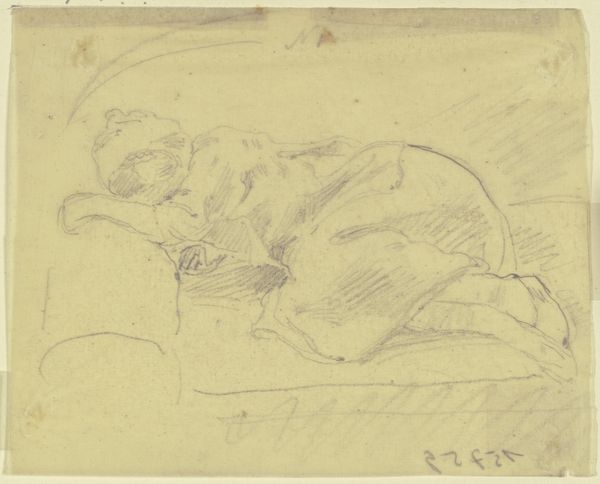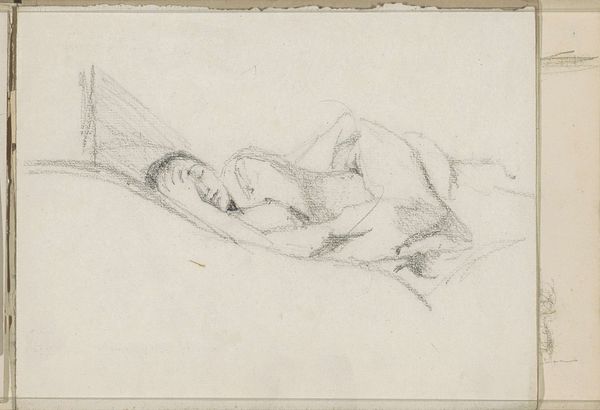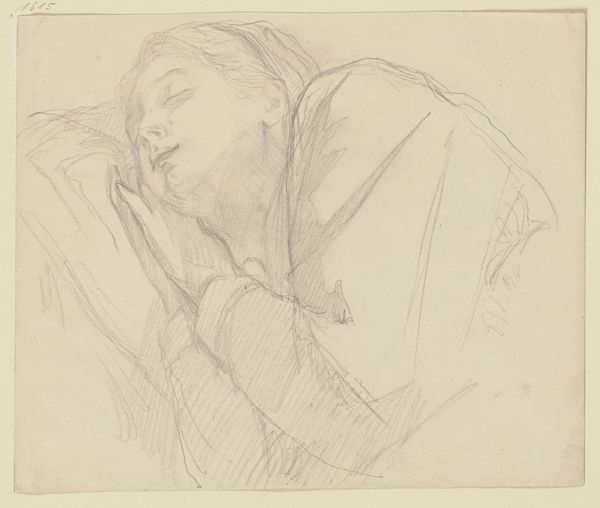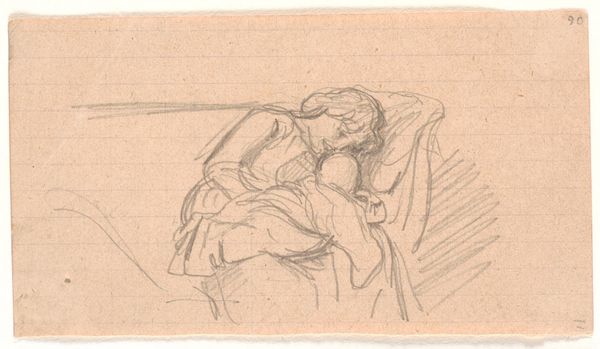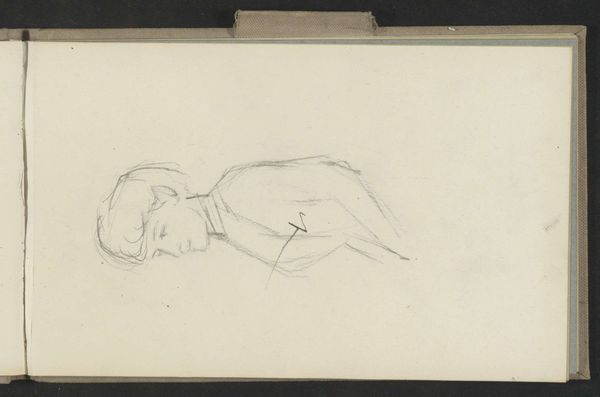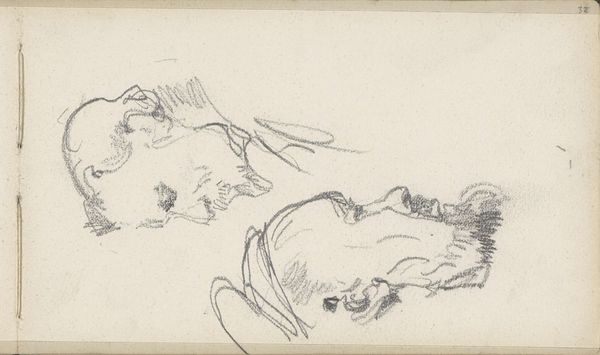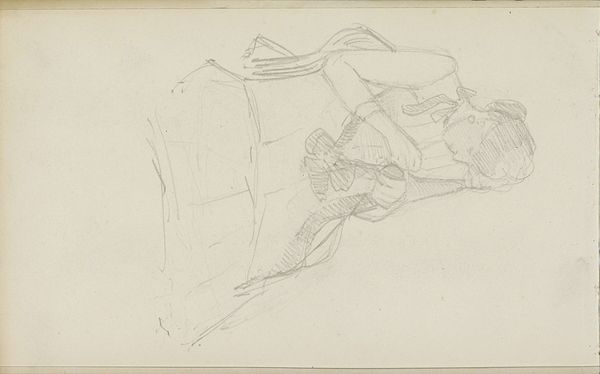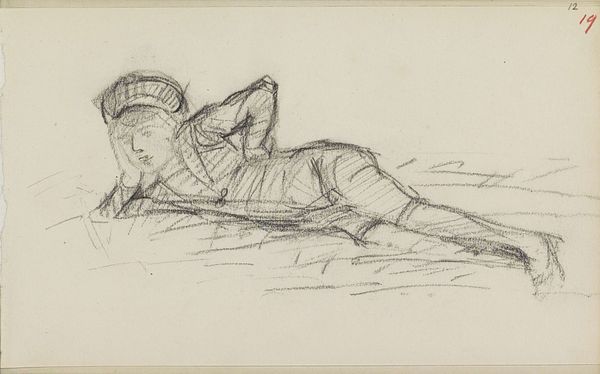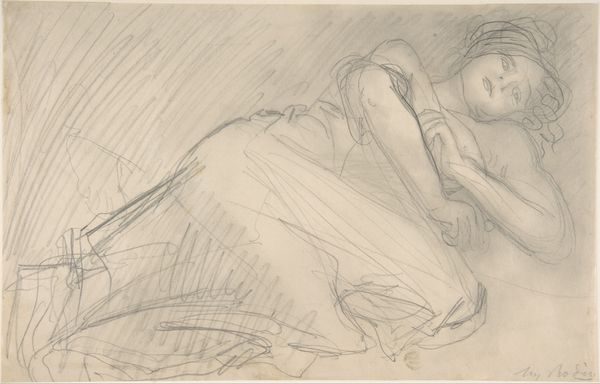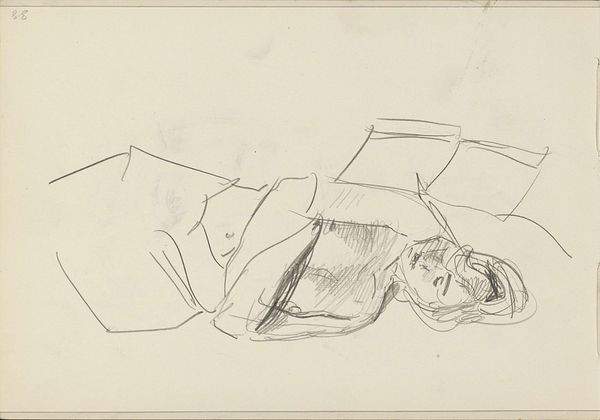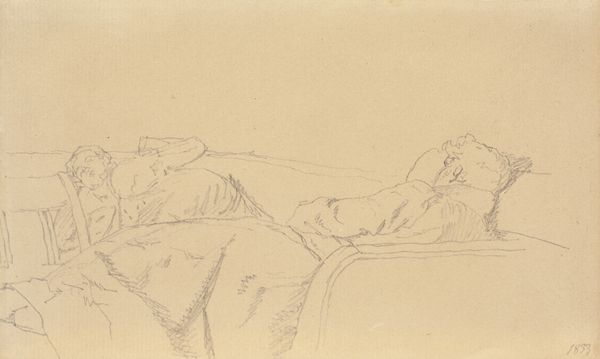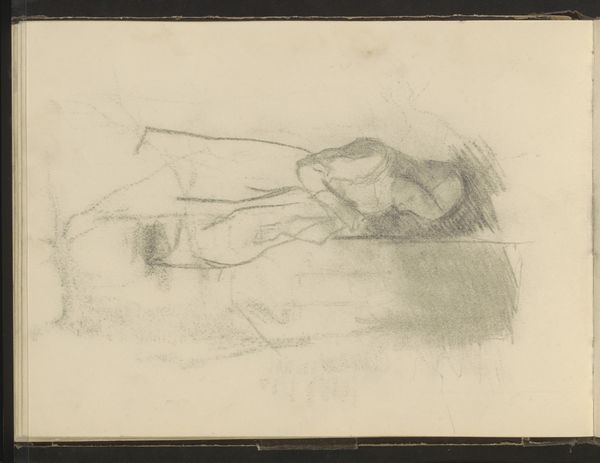
Dimensions: height 129 mm, width 201 mm
Copyright: Rijks Museum: Open Domain
Editor: This is "Horse-drawn carriage in Amsterdam, at Evening," a pencil drawing by George Hendrik Breitner, created sometime between 1886 and 1923. I'm struck by the artist's ability to capture the feeling of movement and nighttime atmosphere using only pencil. What do you see in this piece? Curator: Indeed. Observe how the formal elements work together to convey this sense of dynamism. Breitner employs rapid, broken lines, characteristic of his impressionistic leanings, not to meticulously represent detail, but to evoke the impression of a horse in motion and the hazy atmosphere of an Amsterdam evening. Consider how the concentration of marks around the horse and carriage contrasts with the relatively sparse treatment of the background. This strategic use of density draws the eye and creates a focal point. Editor: I see what you mean about the concentration of lines. It makes the horse and carriage feel substantial and almost pushes them forward out of the picture plane. But isn't the lack of precise detail a weakness? Curator: Not necessarily. Detail isn’t paramount here; instead, the artist prioritized the immediate, subjective experience of witnessing the scene. The formal analysis suggests that Breitner sought to capture a fleeting moment rather than create a photorealistic depiction. The rough quality of the drawing emphasizes the raw, unfiltered perception. Editor: That's a helpful perspective. I was so focused on what the drawing *lacked* that I missed what it was *emphasizing* through its formal qualities. Curator: Precisely. By understanding how artists use elements like line, tone, and composition, we are able to see beyond representational accuracy and appreciate the unique expressive potential of each work.
Comments
No comments
Be the first to comment and join the conversation on the ultimate creative platform.
